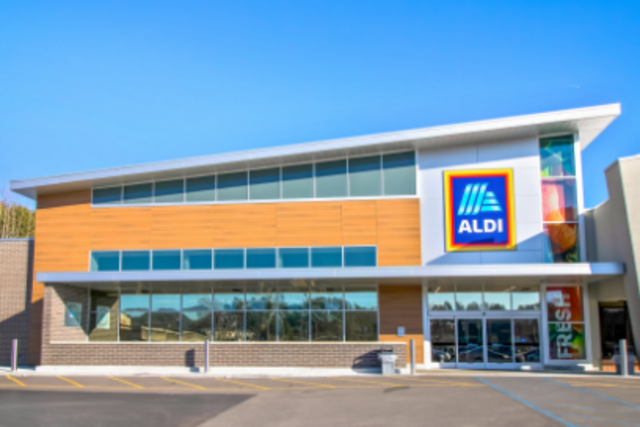YieldTalk news and links - 24 May 2022
This week: The math behind optimal decision-making; 96%(!) of housing markets are overvalued 🔥🔥🔥; the 3 eras of startup valuations🦄

✨ New Review: Mortar Group – Invest in niche NYC neighborhoods
Mortar Group is a vertically integrated real estate firm offering investments in multi-family commercial real estate projects in New York City, with a focus on niche neighborhoods like Williamsburg, Prospect Heights, and Greenpoint.
The projected return varies based on the specific offering, but Mortar Group says that they have earned an overall average 18% annual return since 2004, with returns of 16-21% across their offerings.
The average hold time for real estate investments with Mortar Group is 3-5 years, and investors receive regular cashflow from rental income (net of fees, and distributed quarterly), and then a pro-rata share of the profits when a property is sold.
According to the Mortar Group website, they have closed 23 projects, representing $239M in gross sales. As of this writing, there are six active offerings available for investment.
Mortar Group’s in-house development team reviews and underwrites all of their investments. Their long track record and narrow focus on niche NYC neighborhoods implies a strong competence in property selection.
Investments with Mortar Group are open to accredited investors. Our rating: Excellent. You can sign up for a free account at Mortar Group here. 👈
Notable Offerings
- Bitcoin Discovery Fund. As an investor in the Bitcoin Discovery Fund, you’ll become a fractional owner of bitcoin mines. As these bitcoin mines regularly discover new bitcoin, the bitcoin are then distributed periodically to all investors in the Bitcoin Discovery Fund. The bitcoin mines are powered by off-grid natural gas, which is converted into electricity for powering the mines, offering a cost advantage over on-grid mining. Investors accumulate Bitcoin at below-market rates over the life of the Bitcoin Discovery Fund. 50% off origination fees on investments made before July 1. Minimum investment is $5,000. Open only to accredited investors. Find out more at EnergyFunders 👈
- IDF Consumer Loans Sr. 2022-3. Percent is offering exposure to a portfolio of consumer loans in Mexico denominated in Mexican pesos. These assets have been originated by ID Finance, a growing tech-enabled origination partner headquartered in Barcelona, Spain with local operations in Mexico. The investment offered is a short-duration fixed income security, supported by the cash flows generated from ID Finance’s loan portfolio. Minimum investment is $500. Open only to accredited investors. Find out more at Percent 👈
Worth Reading this Week
A roundup of insights and interesting links from around the investment crowdfunding ecosystem.
Choosing investments is challenging, especially with so many interesting opportunities out there (and more coming out all the time). My wife spotted this article on the math behind making important decisions while avoiding committing before you really know what you want, while also not wasting time endlessly exploring options. It’s a neat model, with applications well beyond investing:
The basic idea is that, if you need to make a decision from 100 different options, you should sample and discard (or hold off on) the first 37. The 37% rule is not some mindless, automatic thing. It’s a calibration period during which you identify what works and what does not. From the rejected 37%, we choose the best and keep that information in our heads moving forward. If any subsequent options beat that benchmark standard, then you should stick with that option to get the best ultimate outcome.
***
Residential housing is such a massive part of our economy that it’s a logical place to look when assessing if and when we’re headed toward a recession. Calculated Risk does a nice job of summarizing both common reasons for recessions as well as the specific housing numbers to watch when looking out for the next one:
One of my favorite models for business cycle forecasting uses new home sales (also housing starts and residential investment). I also look at the yield curve, but I’ve found new home sales is generally more useful … For the economy, what I focus on is single family starts and new home sales.
***
One of the reasons to diversify some of your portfolio into alternative assets like startups, real estate, litigation finance, or art & fine wine is that those asset classes aren’t particularly correlated to the stock market. That said, a bear market like the one we seem to be entering still stings, and Ben Carlson has some helpful advice about surviving bear markets, and a lot of it applies just as well to managing your psychology through any adverse investment outcome:
Jason Zweig taught me in Your Money & Your Brain that losses and gains can have profound physical effects on both the body and the brain. Financial losses are processed in the same area of the brain that responds to mortal danger.
Real Estate
Last week we highlighted a fascinating analysis out of Florida Atlantic University comparing the current overheating in the housing market to what happened in 2007. Adding more context, this piece from Fortune references that same study but also layers in more data from Moody’s, Zillow, CoreLogic and more to paint a more nuanced picture:
An analysis provided by Moody’s Analytics to Fortune finds 96% of regional housing markets are overvalued, and 27% of markets are overvalued by more than 30%. Meanwhile, a separate analysis by the Real Estate Initiative at Florida Atlantic University finds every single one of America’s 100 largest housing markets are overvalued, including 44% of markets that are overvalued by more than 30%.
***
But despite seeing a record amount of housing under construction, it may still not be enough to make up for years of under-building, especially for first-time home buyers, which presents an opportunity for builders or investors who can provide attractive, affordable housing for first-time buyers (assuming they can actually get the projects done…):
The build cycle time for a home—the time it takes to build it from start to finish—is roughly 50% longer than it was prior to the pandemic, said Eric Finnigan, director of building products at John Burns Real Estate Consulting, a research firm.
Startups/Venture
I include a lot of content in this newsletter that’s ostensibly aimed at startup founders, but that’s because a lot of it is just as useful for startup investors who also care about things like valuations and burn rates:
A helpful exercise is to figure out what ARR you need to reach to get back to your last round’s valuation and plan accordingly. To do this, use the estimated change in valuation multiples from leading public companies in your space and add a growth- and efficiency-adjusted premium for your faster growth. Then use this number to calculate the ARR you need to get to. Your goal should be to hit this revenue target with at least 12 months of runway. If you can do this, you’ll be in a strong position to raise your next round of funding. Raising capital with less than 12 months of runway sends a negative signal to the market and makes it harder to have a good fundraise.
***
With $200-300b invested in venture capital this year, the dominant pricing force remains abundant capital supply seeking limited investment opportunities. Since only one VC establishes the market-clearing price, valuations can remain elevated, a phenomenon extant in the early stage market..
***
Dave Kellogg is one of the smartest (and most entertaining) folks out there writing about B2B SaaS sales and marketing (he’s also just an all-around nice guy), and he recently made an appearance on an investing podcast talking about understanding SaaS marketing as an investor. After you listen to the podcast, be sure to check out the rest of Dave’s blog, there’s some fantastic stuff there:
Common problems in the pipeline [include] air, rolling hairballs, sudden changes / gaming, squatting, tantalizing pipeline, and excess coverage.
***
When looking at potential startup investments, you’re bound to encounter references to the acronyms TAM and SAM (short for “total addressable market” and “serviceable available market” respectively), and this piece offers insight into just how companies come up with those numbers (and some perspective on how to assess whether you actually believe them!): [Paywall possible]
When you present your market size data to investors, they’ll look for TAM, SAM and SOM information. These data points pack a mystique about numbers that can appear colossal and out of reach, but if you approach market sizing methodically, you’ll realize it’s really not that complicated.
***
If you’ve reviewed more than a few startup pitch decks, you’ve no doubt encountered financial projections that are, to put it charitably, “optimistic”. Jason Lemkin from SaaStr advocates that founders lean more heavily on recent history when making projections. Something to think about the next time you’re looking at a startup pitch:
The #1 thing I see with financial projections is they just don’t speak with data. Instead, they speak with dreams.
Odds and Ends
- Introducing BlockFi Offers, a New Rewards Offering That Gives BlockFi Cardholders More Ways to Earn Crypto
- April Housing Starts: All-Time Record Housing Units Under Construction
- No End in Sight for Strong Demand for Multifamily Units
- US Historical Homeownership Rate: 1890 to Present - DQYDJ
- Base10 Becomes First Black-Led VC Firm To Cross $1 Billion AUM With New Fund
- US SEC Chair Calls for More Disclosure on Crypto
Email subscribers get this roundup before it's published here. Join the thousands of investors who get alternative-investor education, news and resources -- along with notable investment offerings -- delivered right to their inbox:
Share this post:


